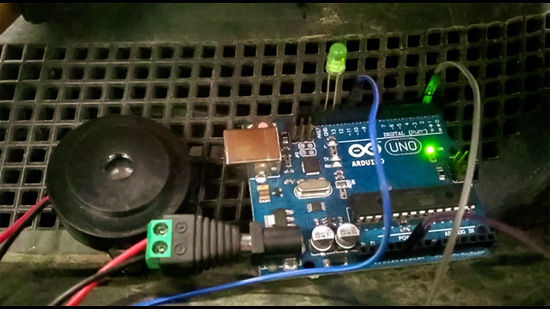Students develop safety device to remind drivers to switch off high beams after usage
MIT-WPU students Advait Dandekar, Rishi Vaidya and Mihir Bidwai have developed a safety device to remind drivers to switch off their high beams when not required
With vehicle drivers often forgetting to switch off their high beams or upper lights after usage, leading in turn to accidents, three students at the MIT World Peace University (MIT-WPU) have come up with an innovative solution to the problem. MIT-WPU students Advait Dandekar, Rishi Vaidya and Mihir Bidwai have developed a safety device to remind drivers to switch off their high beams when not required. The device has not only garnered attention but has also secured a patent, marking a significant milestone in road safety technology.

The inspiration behind the invention is Rishi Vaidya’s father’s personal experience while driving. Recalling the incident, Rishi Vaidya said, “Before the Covid pandemic, during a road trip, my father faced difficulties due to the blinding effect of an approaching vehicle’s high beam after sunset. That moment sparked the idea within me, prompting discussions with my friends, ultimately leading to the conceptualisation of our product.”
The product development process spanned six months, involving meticulous trials and modifications to tailor the device to the diverse needs of drivers. Initially, the team contemplated a mechanism to automatically switch off high beams but concerns arose over its safety, especially in critical situations where high beams are warranted. Hence, they devised a solution that incorporates a series of audible and visual alerts to remind drivers to turn off high beams, ensuring safety without compromising functionality.
Explaining the functionality of the device, Advait Dandekar said, “Upon activation of the high beam, our device initiates a timer. After a predefined duration, the driver is alerted by a series of beep sounds, accompanied by blinking of the high beam indicator. This cycle gets repeated at intervals, providing timely reminders without causing undue annoyance.”
Mihir Bidwai further elucidated the technical aspects, stating, “The device utilises a microcontroller board connected to the vehicle’s switches. When the high beam switch is engaged, the microcontroller detects the activation and initiates the alert mechanism, ensuring seamless integration with existing vehicle systems. Remarkably, the cost-effective nature of the device ensures accessibility, with estimated costs ranging from ₹1,500 to ₹2,000 making it an affordable and invaluable addition to vehicle safety accessories.”
Crucially, the students prioritised user experience, opting for a discreet alert system comprising short, intermittent beeps to minimise driver irritation while effectively conveying the message. Extensive testing on a variety of vehicles, ranging from two-wheelers to larger vehicles, yielded promising results, affirming the efficacy and adaptability of the device across diverse settings. Following rigorous testing, the students proceeded to file a patent in 2021, culminating in the recent confirmation of their patent, validating the novelty and significance of their invention.






